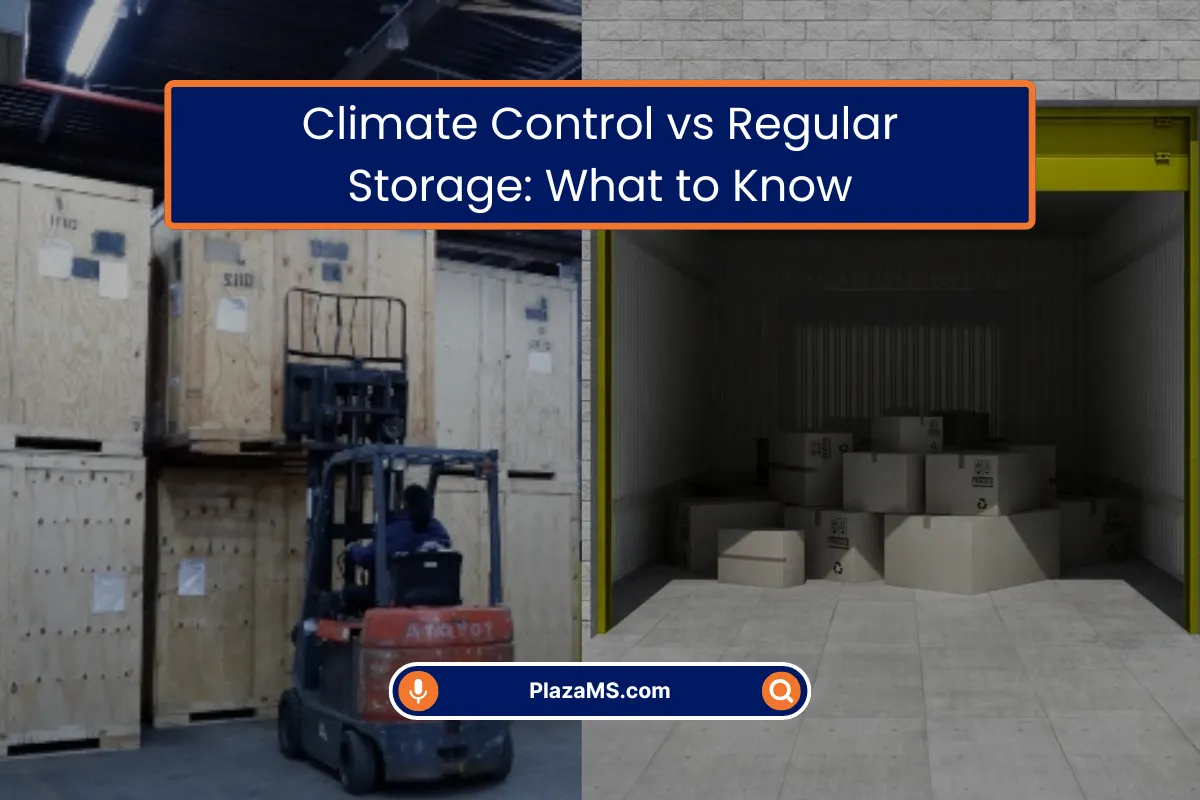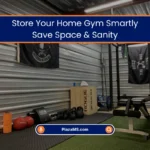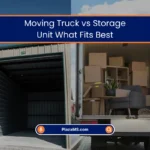Let me tell you a story about my neighbor, Sarah. Last year, she stored her entire living room set in a regular storage unit to make space for her daughter’s graduation party. Three months later, she opened the unit to find her beautiful leather couch covered in white mold spots and her wooden coffee table warped beyond repair. That $50/month she saved? It cost her nearly $3,000 in ruined furniture. This is exactly why I’m writing this guide – to help you avoid these expensive mistakes.
The Real Difference Between Climate Control and Regular Storage
I’ve worked in the storage industry for over a decade, and here’s what most places won’t tell you:
Regular storage units are essentially metal boxes exposed to whatever Mother Nature throws at them. I’ve seen:
- Units that reach 120°F in summer.
- Humidity levels that would make a rainforest seem dry.
- Temperature swings of 50+ degrees in a single day.
Climate-controlled units, on the other hand, maintain:
- Temperatures between 55-80°F year-round.
- Humidity levels between 30-50%.
- Consistent conditions regardless of outside weather.
What Absolutely Needs Climate Control (From Experience)
After seeing thousands of customers’ storage items, here’s my definitive list of what always needs climate control:
Wooden Furniture
- That beautiful dining set? It will warp in regular storage.
- Antique pieces develop cracks and loose joints.
- Even plywood furniture can delaminate.
Electronics
- Flat screen TVs often fail after storage.
- Computers and stereos collect condensation.
- I’ve seen game consoles literally rust inside.
Important Documents
- Paper turns yellow and brittle.
- Photographs stick together permanently.
- Ink runs and smears in humidity.
Clothing and Fabrics
- Wedding dresses develop yellow stains.
- Leather jackets crack and peel.
- Wool items become moth buffets.
Musical Instruments
- Guitars warp beyond repair.
- Pianos need complete rebuilding.
- Even drum heads stretch and crack.
When Regular Storage Actually Makes Sense
Now, I’m not saying everything needs climate control. Here’s what I regularly store in standard units myself:
- Outdoor equipment (it’s made to withstand weather).
- Metal tools (they won’t rust if properly oiled).
- Plastic items (bins, toys, patio furniture).
- Automotive parts (as long as they’re clean and dry).
The Hidden Costs of “Saving Money”
Let me break down the real economics:
| Scenario | Climate Control | Regular Storage |
| Monthly Cost | $150 | $100 |
| 1 Year Cost | $1,800 | $1,200 |
| Potential Damage | $0 | $2,500+ |
| Net Result | -$1,800 | -$3,700 |
I’ve seen this play out dozens of times. That “cheaper” option often ends up costing far more.
How to Make the Right Choice for Your Stuff?
Here’s my simple decision tree I’ve given to hundreds of customers:
- Ask yourself: “Would I be devastated if this got ruined?”
- Yes? Climate control.
- No? Maybe regular.
- Consider duration:
- Under 3 months? Maybe risk it.
- Over 3 months? Climate control.
- Look at replacement cost:
- More than $500 to replace? Climate control.
- Less? Your call.
Why We Do Things Differently at Plaza Mini Storage
At our facility, we don’t just rent space – we protect your belongings. Here’s what sets us apart:
- Free consultations to help you choose the right unit.
- No pressure sales – we’ll tell you when you don’t need climate control.
- 24/7 monitoring of climate conditions.
- Damage guarantee on climate-controlled units.
Final Thoughts From Someone Who’s Seen It All
After a decade in this business, here’s my hard-earned wisdom:
- If it’s sentimental, valuable, or hard to replace – climate control.
- If it’s replaceable and durable – regular might work.
- When in doubt – choose climate control.
Don’t be like Sarah (or the dozens of other customers I’ve seen learn this lesson the hard way). That few extra dollars a month is cheap insurance for your important belongings.
Want to see the difference for yourself? Come tour our facility – we’ll show you exactly what makes our climate-controlled units special. And if you mention this article, I’ll personally walk you through your options with no sales pressure. Because at the end of the day, your stuff should come out as good as it went in.












0 Comments